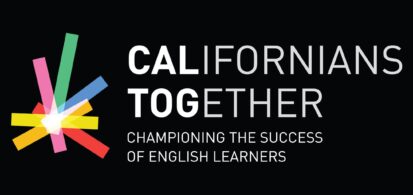This blog post is the second installment in our ongoing blog series celebrating the State Seal of Biliteracy. The first entry can be found here.
Since 2012, California has awarded the State Seal of Biliteracy to students who demonstrate proficiency in English and at least one other language. This award recognizes the value of multilingualism and its important place in an increasingly global economy. However, for too long, the requirements for earning the seal did not reflect a meaningful connection to equity. Ironically, in the state that led the nation in offering the seal, many bilingual students (including English learners) were not receiving it.
In the fall of 2023, Governor Newsom signed AB 370, authored by Assemblymember Dawn Addis, into law. This legislation rectified disparities by creating more equitable pathways for students to demonstrate their English proficiency. Doing so was incredibly valuable to English learners who, despite being multilingual in their everyday lives, sometimes struggled to show proficiency in a number of ways not required of world language learners. As the school year draws to a close, we are already seeing the impact of AB 370.
While we do not have full state data on recipients for every district in California, we were able to tap into our extensive English Learner Leadership & Legacy Initiative to ask district and county office leaders to share information on how many students received the State Seal of Biliteracy this year compared to last year. We are so pleased to share that, on the aggregate, we saw increases in seal recipients across the board with a 21.9% increase. We should note that these are preliminary findings since students are still waiting on Advanced Placement (AP) test scores, set to be released in July. The good news is that this means the number of recipients can only go up.
The Humboldt County Office of Education reported 150 recipients this year—an increase of approximately 34%. San Francisco Unified saw an increase from 552 to 629 students who received the seal last month—they added that they expect up to an additional 100 recipients who are waiting on AP world language scores and ELPAC results. Down south, San Diego Unified reported 638 recipients this school year, up from an already robust 435 last year. Los Banos Unified in Merced increased from 16 recipients last year to 77 this year—an increase of over 380%. If not for AB 370, many bilingual students would go unrecognized across the state. Districts should be very proud of these gains and relish the opportunity to build on them. These are just a few of the data points we received from districts from across the state.
As Asm. Addis noted when she introduced AB 370 last spring, “The Biliteracy Advancement Act would provide students with more options when testing for English proficiency, creating parity with the current second language testing alternatives and a fair path towards the State Seal of Biliteracy (SSB) for all students. The SSB allows for students to showcase their proficiency in multiple languages to potential colleges and employers, as well as giving students a sense of pride in their primary language.” Beyond the prestige the seal represents for the workforce, it is also a crucial symbol that our state values home language. We are no longer in an era where students are faced with the choice of learning English or preserving the language their family speaks.
AB 370 represents the best of assets-based policymaking, and it should serve as an example that even great initiatives like the State Seal of Biliteracy have room for improvement. We look forward to using this space to continue highlighting the policy and advocacy efforts that ensure the seal recognizes the hard work of multilingual learners in California and across the country. Please continue following Californians Together as we bring you research, interviews, and policy analysis to keep you informed about the power of the State Seal of Biliteracy.
